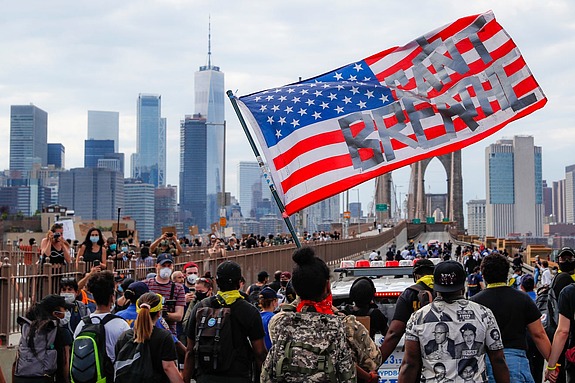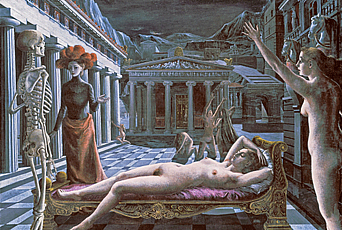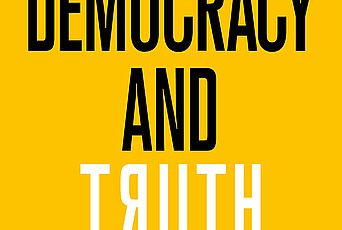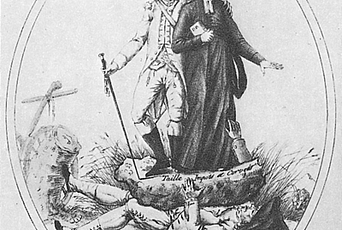Democracy's Big Secret

I am very happy to be back, albeit in virtual space, at the Institute. I completed my entire manuscript for The Spectre of Race: How Discrimination Haunts Western Democracy (Princeton University Press, 2018) at IAS, and have great memories of productivity there in a supportive community of scholars. I will combine some of the book’s key points about racial hierarchy and democratic politics (actual political systems, not the political party in the U.S.) with an analysis of racial hierarchy in the contemporary United States and in other places across the globe. One of the key takeaway points is to look at democracy not simply as a concept and a set of ideals, but also as a practice: a particular combination of institutions, law, norms, and actors.
One of the key questions Spectre explores is how the practice of democracy produces and is affected by political inequality. Democracy and inequality have had a complementary relationship through the formation of political institutions that encourage and maintain hierarchies of difference along the lines of presumed racial and ethnonational distinction, nationality, and, of course, gender. The three countries I spent the most time analyzing for Spectre are Great Britain, the United States, and France. These three are often referred to as the longest-standing continuous democratic polities.
The economies and polities of these societies, however, utilized enslaved and poorly paid labor to provide citizens with material freedom to exercise citizenship. In The Promise of Politics, Hannah Arendt describes the role slaves played in classical Athens and other democratic forms to provide the material preconditions for citizens to engage in politics, free from economic and material constraints. Leaders in classical Athens first came up with the idea, which was transformed into law, that its citizens—exclusively male—literally emerged from the soil. This served as a barrier preventing women and foreigners from becoming citizens in classical Athens. In more contemporary versions of democracy, the governments of France, Britain, and the United States created and maintained laws to prohibit or limit the enslaved, the formerly enslaved, and the popular classes from membership in their democracies.
Along with the nexus of democracy and inequality, another key theme of Spectre is a tendency across democracies for some political activists and their constituencies to assume that nation-states have been and somehow require homogeneous populations—those often being religious or ethnonational or presumably racial—to function effectively in polities, particularly democratic polities. This sentiment has found its expression in many right-wing movements, not just in the U.S. but across the EU, Russia, and other places, notwithstanding the fact that no nation-state in the contemporary world began as a homogeneous society. This tendency is highlighted by the 2017 confrontation between antifascist, antiracist organizations and individuals, on the one hand, and pro-fascist, neo-Nazi, and other white supremacist groups on the other in Charlottesville, Virginia and other cities across the United States.
One of the core desires that many contemporary right-wing advocates have articulated is to create an ethnos filled with Aryans, or some other kind of white people, in spite of the fact that true Aryans came from what is now referred to as the Indian subcontinent, and white people, much like blacks or Latinos, are neither an ethnicity or race, just arbitrary classifications of people. This false assumption, however, has had dire political consequences in the form of restrictive immigration policies, forced assimilation policies, segregation, and—as in the case of the Third Reich, but also at times in the U.S.—expulsions and liquidation of populations.
Woodrow Wilson, the twenty-eighth president of the United States, held views on nationality, statehood, and identity that are clearly informed by this ideology. I utilize Wilson in light of the recent decision by Princeton University to remove his name from a residential college.
Wilson’s views on the relationship between race and democracy can be found in his unpublished manuscript on modern democracy titled The Modern Democratic State, an earlier draft and foundation for his book, The State. At the outset, Wilson details “several all-important conditions” for the successful operation of democratic institutions. Number one on Wilson’s list is “the homogeneity of race and community of thought and purpose among the people.” Thus, homogeneity produces political stability, but also democracy.
This point is articulated in several passages in the manuscript. He makes clear that even though U.S. Negros (the bright and more ambitious among them) have the capacity for self-government, they should never, under any circumstances, rule over the Saxon race. Such beliefs, which Wilson shared with other staunch segregationists during the era of Reconstruction, were part and parcel of what came to be known as Euro-Aryanism.
Wilson strongly believed that Aryans were fundamentally a state-making people and central to the history of state formation and democracy:
For purposes of widest comparison in tracing the development of government, it would, of course, be desirable to include in a study of early society not only those Aryan and Semitic races, which have played the chief parts in the history of the European world, but also every primitive tribe, whether Hottentot or Iroquois, Finn, or Turk.
This is a direct quote from the manuscript The Modern Democratic State. Again, we have this theme of population homogeneity linked to political stability and, ultimately, to democracy. Population homogeneity within a nation-state, however, like the categories of the foreigner and the citizen, is a political artifact. We do not find such artifacts ready-made in the world.
As the sociologist Rogers Brubaker has reminded us, all polities create barriers to membership. All nation-states, by design, favor the few over the many. Why should democracy, particularly contemporary liberal democracies, be any different? Democracies have always maintained a sharp distinction between members of their societies, the people who live within them; and members of the polities, the people who are authorized to formally participate in the political process. To maintain barriers between members of polities and members of society, law and coercion have often been combined not only to ensure that populations invested with civic benefits and privileges remain privileged, but to also ensure that marginalized populations remain at the periphery. When democracies create barriers to civic membership, they have to justify those barriers. Moments of geopolitical crisis, such as those experienced by Athenians during the Greco-Persian Wars, reveal popular and fundamental anxieties about being overrun by certain, but not all, foreigners.
For well over two centuries since, citizenship has often been associated with ethnonationally, religiously, and chromatically privileged groups, not with the enactment of behaviors associated with citizenship. This tendency is clearly evident in President Donald Trump’s evocations of caravans surging from Central America, carrying dangerous criminals into the United States. In what sociologists used to refer to as coded language before racist speech went mainstream, Trump was sending a message that implicitly and explicitly denounced certain—not all—immigrants from entering the United States.
What does all this tell us about the practice of democracy? Certainly, racial and ethnonational hierarchy is not the only way in which we can track the emergence of exclusionary citizenship criteria. But an examination of ethnonational and racist hierarchies provides opportunities to examine the emergence and development of institutionalized racism in the form of what I call racial regimes. The existence of racial and ethnonational regimes and democratic polities enables scholars and citizens to consider broader, more abstract questions about the entanglements of citizen, society, and power.
Under what conditions does democracy require barriers to membership? Could it be that under the most practical conditions for the elaboration of democratic and republican ideals (not the political parties), a subordinated laboring population with limited or non-existent political rights is necessary for the function of democracy for the few? This is, in many ways, the legacy bequeathed to us. What else is voter repression but an effort to secure the victory of one political party over another, and in the case of the United States, the expression of anxiety on the Republican Party that if it loses the election on November 3 or sometime afterwards, black and brown peoples, by virtue of demography and political will, may overtake whites in both demographic and political terms? As the presidential campaign in the U.S. comes to a close, Trump is increasingly providing his constituency with desperate language about the collapse of the United States and “all that it stands for” should the Democrats win.

If we take a look at how democracies function when challenged to extend the franchise and other aspects of democratic practice to a population that was once excluded, barriers to political and civic membership have not fallen due to sometelos intrinsic to democratic politics. Those barriers have been pushed aside because of challenges made by the excluded. Examples are civil rights movements, feminist and abolitionist movements, suffragist movements, and so on, which managed the incorporation of the formerly excluded into democratic polities. This is, in some sense, what we’re seeing today. The dynamic relationship between movements seeking radical change and those that want to preserve the status quo reminds us that democracy—not just electoral but economic and social democracy—is something that has been and continues to be fought over.
The question is, how will it be fought over? I think we can take some cues from other times and places in an effort to contextualize the current crisis of democracy. I think this moment, particularly in the United States, holds seemingly disparate elements that are reminiscent of Reconstruction after the fall of the South at the end of the Civil War and the interwar years in Europe, from the end of World War I through the rise of fascist states like Germany and Italy.
Democracy—not just electoral but economic and social democracy—is something that has been and continues to be fought over.
With respect to Reconstruction, traces of white supremacist reaction to the presence of black people as representatives of state are evident in the visceral reaction to President Barack Obama’s legacy regarding healthcare. It’s been clear that Trump, Mitch McConnell, and other members of the Republican party want no less than to erase the Obama presidency from the political history of the United States, as many southerners did with Reconstruction. Trump’s implicit and at times explicit support of white nationalist and other organizations’ use of force against citizens and civic groups will make the period between November 3 and the announcement of the ultimate victor a period of national reckoning. Paramilitary groups’ increasing intimations of violence may turn into a civil war, not civil war in the classic sense, but in the form of skirmishes in different parts of the country involving paramilitary groups, citizens who oppose them, and segments of the armed forces who would ostensibly show up to keep the peace by restoring “order.” There are Black, Latino, Indigenous members of the armed forces who support Black Lives Matter and allied groups, as well as soldiers who are opposed to such groups. Will this lead to dissension amongst the armed forces? I really hope this scenario does not become a dystopic reality.
In the present day, Black Lives Matter and allied social movements represent the long-standing tension between democratic and coercive institutions, built within the same democracy to manage inclusion, exclusion, and hierarchy at the same time. In the United States and in so many other cases, coercive apparatuses—the police, the military, and the technological tools of surveillance—have served this function by targeting and marginalizing excluded populations. Jim Crow was a central feature of southern politics after the Civil War that served this essential function, with the support of groups like the Klan and the Regulators, but also, lest we forget, average citizens participating on juries and in mob violence.
This year, we’ve witnessed vigilante groups that not only had the support of the police but also state, municipal, and sometimes federal courts. At any number of protests, whether in Charlottesville, Virginia; Lafayette Park in Washington, D.C.; or Philadelphia, where I reside, there is audio-visual evidence of police officers with very cozy relationships with vigilante groups during street protests. Police officers have often stood watch as antiracist protestors got pummeled.
Once a democratic polity loses any moral, ethical, or political compass, the most vulnerable suffer first and, if not first, the most. The stubborn persistence of Covid-19 throughout the world has put the precarity of marginalized populations front and center. When one hears Republican Lieutenant Governor Dan Patrick of Texas opine during the Covid-19 pandemic that the elderly and the poor, those who were more likely to have compromised immune systems, needed to serve as martyrs for the purportedly healthiest segment of the population, we creep into advocacy for eugenics.
Under such conditions, where does civil society begin and the state end? Once these lines get blurred, vigilante groups act as if they represent the people’s will and, by extension, state power, with direct ties to police departments, district attorney’s offices, and members of the armed forces who remain committed to white supremacy. It is also important to remember that black and brown populations have been living under authoritarian situations for quite some time. Those who protest these authoritarian conditions have had to risk imprisonment, severe beatings, unemployment and character assassination, or their very lives. In the current moment, one key difference between a nation-state such as the United States and Brazil (led by authoritarian populist Jair Bolsonaro) is that many of the U.S. military elite and bureaucrats of several branches of government have expressed their disapproval of Trump’s leadership. In Brazil, the military’s presence in present-day government and civil society is equal to, and in some areas, exceeds, the military’s presence during the most recent era of military dictatorship in Brazil (1964–86). As during the U.S. civil rights movement of the 1950s and 1960s, portions of the U.S. armed forces may be called upon to protect United States citizens from vigilante groups, and in so doing help salvage what is left of an already limited U.S. democracy from destruction from within.
A glimpse of democracy’s secret reveals its juggling act to preserve egalitarian and unequal orders simultaneously. If many of us are fighting for or hoping for democracy’s salvation, what form of democracy will we seek to create or at minimum maintain? The old models have run their course. It’s time for many of us to acknowledge that democracy must be made anew.


